I had no real expectations when I started watching this film. I’d never heard of it, or its star, William S. Hart, before I embarked on my “watch all the movies” project, but I saw it mentioned in a book about silent films I’d read some years back, and added it to the list almost as an afterthought. It’s not exaggeration to say I was stunned by how great this movie is.
I expected a primitive Western, given that this film was made barely a decade after the very first Western, The Great Train Robbery, a film that wasn’t the least bit compelling or sophisticated. Add to that the fact that so many of the older Westerns I’ve seen, all of which were made long after this one, have been fairly one-dimensional and formulaic, and you understand why I anticipated a hokey, predictable film. Boy was I wrong.
This is a very short movie, running just under an hour in length. From the get-go, it captured my attention, as it opens with each actor dressed in formal attire stepping on stage to bow to the audience. In mid-bow, the actor is transformed into his character, and rises in full Western regalia. Maybe I’m a gullible film-goer, but I was shocked by how drastic the transformations were. Clean-shaven men rise up with scraggly beards. Young men suddenly appear old. It’s a remarkable moment, as one sees just how much makeup and props can alter an actor’s looks.
Once the film is under way it initially appears to be just another Western, this time set in Arizona. Jim Stokes, the “Two-Gun Man,” holds up a stagecoach carrying $1,000 in gold. His method is somewhat clever, as he places three hats atop some shrubs a short distance from the trail, each with a pipe sticking out in front. From the viewpoint of the people in the stagecoach it looks like three bandits pointing guns at them, so when he holds them up, the coach’s guards surrender. Stokes tells his victims to stand still for five minutes, yells to his “accomplices” to shoot anyone who moves, then flees with the gold. Eventually his ruse is discovered and he’s pursued, and though wounded by a gunshot, he escapes. He doesn’t make it far before he passes out beside a riverbank, where’s he discovered by Phil Brent, a prospector who lives nearby, and who brings Stokes home and patches him up.
Brent’s daughter Nell tends to Stokes, and of course they fall in love. When a traveling parson happens by, Brent enlists him to marry Jim and Nell. Of course, neither Nell nor her father know who Stokes really is, and Stokes vows to go straight. He wraps up the stolen gold and addresses it to the bank it was destined for before his robbery, then heads into town to mail it. Once there, and before he can mail the gold, he’s identified as the wanted man he is, and has to flee. He heads for the Mexican border. At one point he scribbles a quick note for Nell, telling her to wait for him, and sends it with his horse back to the Brent home. He continues on foot, and makes it to a border town, all the while pursued by the sheriff. And this is when the film takes an unexpected turn. I almost don’t want to spoil it, as I now have actual listeners, so let me pause a moment and implore you to watch the movie before listening to the end of the podcast. It is available on Amazon Prime, where it can be rented for $2.00. I promise you, it will be the best $2.00 you spend this week.
That said, I don’t want to oversell this. Don’t expect something to rival John Ford or Sergio Leone. Also, be forewarned, the quality of the Amazon print is terrible. It skips and jumps, has blurred and faded with age, and is covered in scratches. On the plus side, and a first for any film I’ve watched thus far, it seems to have a soundtrack attached, likely appended in the ‘30s or ‘40s, when such a thing became possible. The soundtrack is very effective at giving the film a more modern feel, as it is a proper movie soundtrack that fits the film, as opposed to the tinkly piano music most of the silent films I’ve watched so far have had. The negative is that it has also decayed with age, and it sounds as worn as the picture looks. If you watch this, go in with an open mind, realizing you are seeing a film made 108 years ago that was poorly preserved, and is unrestored. Be glad it even exists in any form rather than criticize its imperfect quality. So now, go watch! Come back when you are immune to spoilers!
You’re back? Wasn’t that something? I may be wrong, and as I see more Westerns as I progress through the films on my list I may well encounter others like this one, but I did not expect such a morally ambiguous story. While watching, I honestly had no idea who was going to win or lose, live or die, end up in jail or go free, at the end of the film. When the sheriff lost the stolen money at the roulette wheel, I thought he might end up in a cell along with Stokes. I did not expect him to partner with Stokes. That moment, by the way, is remarkable. When The sheriff returns to the hotel room and tells Stokes what he’s done, Stokes’ laugh is genuine and perfect. And when all is said and done, and Stokes recovers the money, and the sheriff gives him a head start to the border, I was shocked. That feels like the sort of story that didn’t become possible until the 1960s and the spaghetti Westerns and counter-culture heroes, yet here we have it in 1914— December 3rd, 1914 for those keeping track. William S. Hart is hugely talented, and deservedly the star of the film, but J. Frank Burke is just as good as Sheriff Bud Walsh. Without his presence in that role, the film would not hold up, and the two play off one another perfectly to make this the masterpiece that it really is.
When Stokes and Nell give the sheriff a goodbye wave, I was all smiles, and for days after watching this I’ve been thinking back to it with admiration. So much admiration, in fact, that I bought a set of DVDs that includes this film and 4 other William S. Hart Westerns, which I’ve added to my list and will watch when the time comes. I fear they can’t be as good as The Bargain, which is now officially one of my favorite films of all time, but I’m curious to see what else Hart did.
As I mentioned above, you can watch the film on Amazon Prime, or buy the DVD as part of the set which I’ve linked to the picture below.
I looked up some reviews of the film, written when it was released, to try to get a sense of how critics, and audiences, of the time received this picture. Variety (November 13, 1914) described it as “one of the best feature-length Westerns ever shown,” and compared Hart’s performance to the artistry of a Frederic Remington painting. Meanwhile, W. Stephen Bush in The Moving Picture World (December 5, 1914) felt differently about the film, writing “The Bargain is nothing more than an old-fashioned ‘Western.’ I cannot truthfully say that it is one inch above the average of such pictures.” However, in his review he makes it clear that he is bothered by the morality of the film, especially the scene where the sheriff gambles, and I think that colored his review. He wrote, “There can be no doubt whatever that a picture of this kind has a bad influence on youthful minds.”
The film ends with a final title card that, at least in my mind, addresses the concerns of critics like Bush, and puts forth an optimistic point of view.
No star is lost we once have seen; we always may be what we might have been.
Next I’m watching: Cinderella [1914], directed by James Kirkwood.





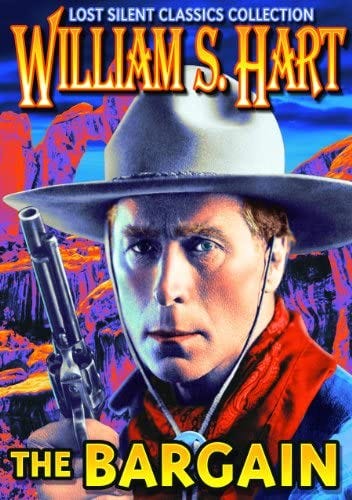

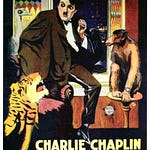
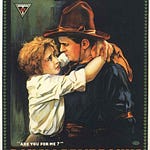
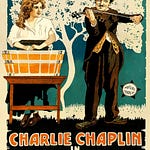

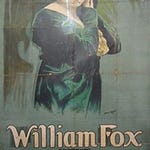
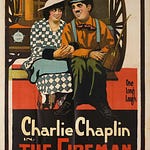

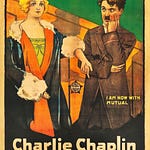
Share this post